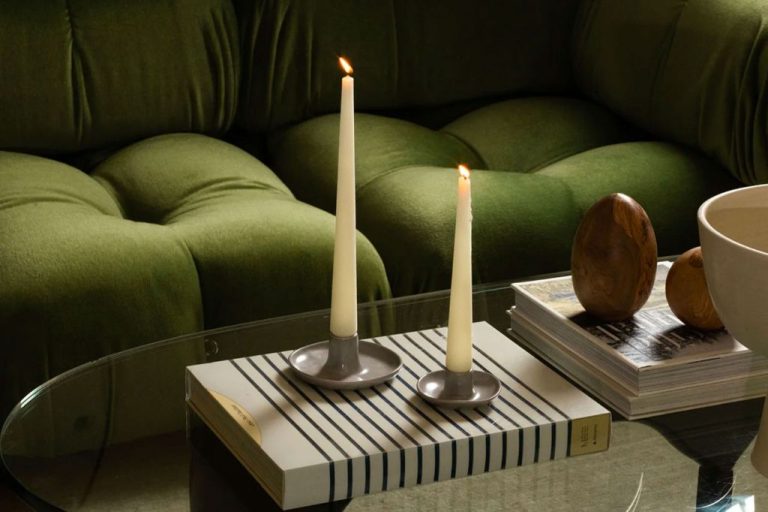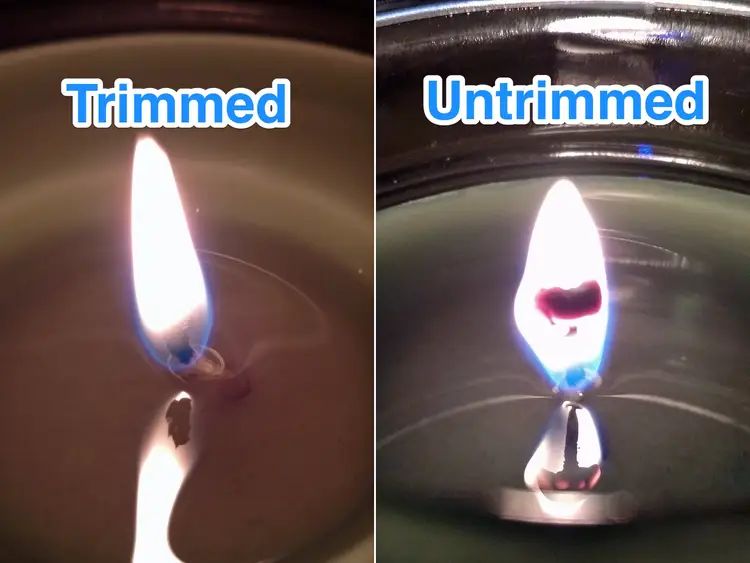Is It Safe To Make A Candle In A Coconut Shell?
A coconut shell candle is a homemade candle created by placing wax and a wick inside the natural bowl shape of a coconut half. Coconut shells make novel, rustic candle holders that tie into beachy or tropical decor themes. The creativity and satisfaction of making your own candle at home inspires many people to try this DIY project.
Coconut shell candles allow you to upcycle waste shells into decorative, reusable items. Their natural, biodegradable material sets them apart from store-bought candles encased in glass or metals. The textured, organic look of a coconut shell coordinates well in natural, coastal, or Hawaiian home styles.
Lighting a candle inside a coconut half produces a gentle, ambient glow from the unique container. Coconut shell candles make thoughtful handmade gifts too. With creativity and proper safety precautions, a coconut shell can be transformed into a charming homemade candle.
Flammability Concerns
Coconut shells are flammable and can catch fire easily when exposed to an open flame. This is because coconut shells contain oils and fibers that can ignite quickly. The husk, shell, and hair-like fibers surrounding the coconut shell contain lignin and cellulose, which are structural molecules that are very combustible.
When lighting a candle inside a coconut shell, the flame is in direct contact with the flammable interior surface. The radiant heat from the candle flame preheats the inner layers of the shell, driving off any moisture and making the material even more susceptible to igniting. This allows fire to spread rapidly through the shell once ignition occurs.
Therefore, proper precautions need to be taken when using coconut shells to hold candle wax due to their highly flammable nature. The fire risks involved make coconut shells a poor choice for candleholders unless effective safety measures are implemented.
Heat and Fire Safety
When making a candle in a coconut shell, it’s crucial to take proper safety precautions around heat and fire. Coconut shells are flammable, so having an open flame inside one requires extra care.
Be sure to place the lit coconut shell candle on a heat-resistant holder or plate. Glass, ceramic, or metal work well to prevent the surface underneath from getting too hot. Avoid setting the coconut shell directly on wood, plastic, or other flammable materials.
Never leave a lit coconut shell candle unattended. The flame could grow larger than expected or get out of control. Stay nearby to monitor the candle and extinguish it fully when finished. Have a snuffer tool or lid ready to quickly put out the flame if needed.
Keep the coconut shell candle out of reach of children and pets to prevent accidental fires. Choose a safe location away from flammable objects like curtains or paper. Proper supervision is essential.
Proper Wicks
Choosing the right wick is crucial for coconut shell candles. The wick size directly impacts the flame size. A wick that is too wide for the candle will create tall, sooty flames with black smoke. This is both a fire hazard and reduces the candle’s burn time. For coconut shell candles, braided cotton wicks that are just wide enough to fill the hole drilled in the shell typically work best. The wick should fit snugly but still be able to slide in and out of the hole. Using a properly sized wick prevents dangerous flare-ups and promotes clean burning.
Ventilation
Ensuring proper ventilation when burning a coconut shell candle is crucial. Coconut itself releases very little odor or smoke when burned. However, the wax, wick, and any scented oils used will produce fumes. Without enough airflow, those fumes can concentrate to unsafe levels.
Always keep coconut shell candles in well-ventilated areas. Burn them in rooms with open windows, screened doors, range hoods, or fans running. Basements, small bathrooms, and enclosed corners tend to lack sufficient ventilation.
Avoid burning a coconut shell candle for extended periods in confined, unventilated spaces. The smoke and scent buildup can cause headaches, nausea, and other health effects if inhaled in high concentrations over time. Proper ventilation prevents this by allowing fumes to safely dissipate.
Pay attention to any signs of poor ventilation while a coconut shell candle is lit, such as the flame burning unevenly, smoke accumulating in the room, or the scent becoming overpowering. Snuff out the candle immediately if inadequate airflow is noticed.
With proper ventilation and reasonable burn times, coconut shell candles can be safely enjoyed without unhealthy fume exposure.
Location
When burning a coconut shell candle, it’s important to place it somewhere safe, out of reach of children and pets. Choose a location away from flammable items like curtains, furniture, carpeting or anything else that could easily catch fire if the flame were to spread.
A high shelf or tabletop away from high traffic areas is ideal. Make sure the coconut candle isn’t positioned near any drafts that could blow the flame in an unsafe direction. Position it on a small plate or burner to catch any melted wax and limit the spread of heat.
Kitchens, garages and outdoor patios tend to be safer locations than bedrooms or living rooms. Wherever you place your coconut shell candle, check on it frequently and keep flammables at a distance.
Supervision
While a coconut shell candle may seem like a fun craft project, it’s important to supervise it at all times. Never leave a burning coconut shell candle unattended. Make sure to blow out the candle and extinguish any flames when you are done enjoying it.
Unlike traditional candles, coconut shells can more easily tip over, roll, or be knocked down since they do not have a sturdy base. This makes them more prone to fire risks if they are left alone while still lit. Stay near the coconut shell while it is burning so you can quickly address any issues.
Additionally, the components inside a homemade coconut candle are more likely to flare up if left alone. Melted wax can overheat without monitoring. The wick may bend over and ignite a bigger flame. Embers may continue smoldering after you think the candle is extinguished.
Supervise children especially closely with coconut shell candles, never letting them be near the candle unwatched. The novel nature may pique their curiosity in unsafe ways if they are unsupervised.
Exercise caution and keep a careful eye on your coconut shell candle the entire time it is lit. Never leave a room or take your attention away from it, even for a minute. The safest practice is to actively blow it out and confirm it is fully extinguished as soon as you are done using it.
Alternatives
If you have concerns about using a coconut shell as a candle holder, there are plenty of other natural options to consider. Many of these serve as safer and more stable alternatives while providing a similar earthy, rustic aesthetic. Some ideas include:
– Seashells – Small to medium sized shells like scallop shells, conch shells, or clam shells can make lovely candle holders. Choose shells that are relatively flat and wide to securely hold a votive or tea light. Seashells are typically sturdier and less flammable than coconut shells.
– Stone – Smooth stones, pebbles, or gems can cradle tea lights beautifully. Stones conduct less heat and are entirely flame-resistant.
– Wood – Small wood slices or bamboo holders offer a great natural alternative. Avoid resin-rich woods like pine or fir and opt for denser hardwoods that won’t burn as readily. Look for specialty candle holders made of wood slices if concerned about safely drilling into wood yourself.
– Glass/Ceramic – For the closest match to a coconut’s smooth interior, try a glass or ceramic votive holder. These are designed specifically to contain candle flame safely.
When to Avoid
There are certain situations where making candles inside coconut shells should be avoided. The most important is in small, enclosed spaces with poor ventilation like small bedrooms or bathrooms. Burning any candle in a room without proper airflow can lead to a dangerous buildup of smoke and carbon monoxide. Since coconut shell candles give off more soot than typical paraffin or soy candles, they pose an even higher risk. The smoke released from a coconut shell can quickly make a small room hard to breathe in. Another scenario to avoid is leaving a coconut candle unattended. Like any open flame, coconut candles require supervision to prevent fires. Also refrain from using coconut candles on unstable surfaces or near flammable materials like curtains. Ultimately, coconut shell candles are best suited for large, open indoor areas or outdoor use where smoke and fumes can dissipate safely.
Conclusion
In summary, creating candles in coconut shells can be done safely with proper precautions. Be sure to use the right wick size to prevent excessive heat and flames. Ensure proper ventilation by never leaving a coconut candle unattended or near flammable items. Only burn coconut candles on fireproof surfaces away from drapes or furniture. Have a fire extinguisher or bucket of water nearby in case of emergencies. Consider battery-operated flameless candles as a safer alternative. While beautiful, coconut shell candles demand care and attention to avoid potential fire hazards in the home.




